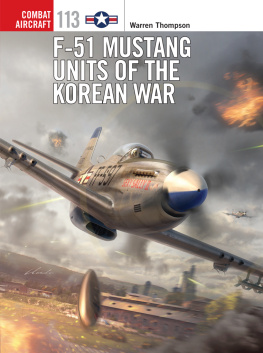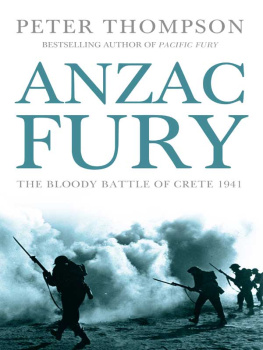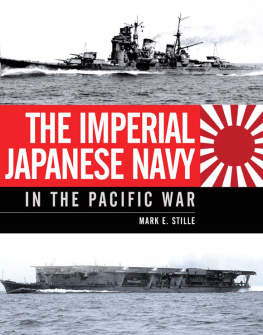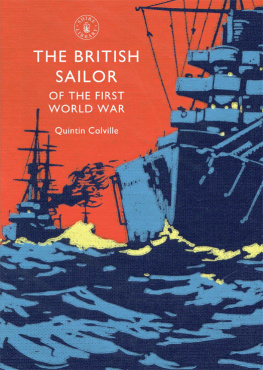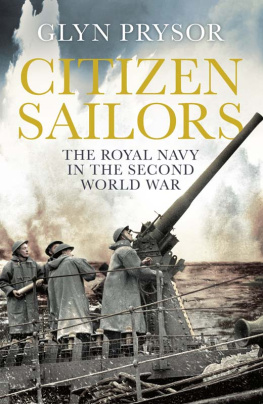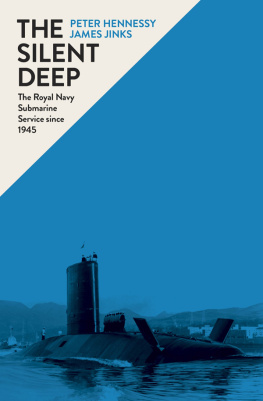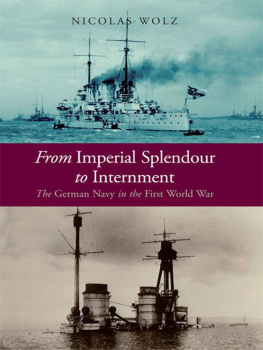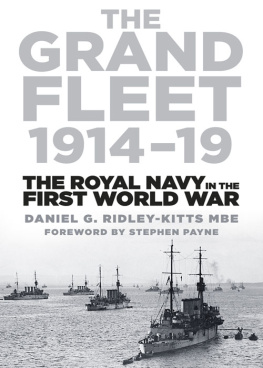
Preface
The remarkable unpublished material in the Imperial War Museums Archives allows voices from ninety years ago to tell us what it was really like to be a sailor or an officer in the Royal Navy, not only in the major sea battles, but in the boredom and perils of the North Sea patrols and convoys in the Atlantic and Mediterranean; the cramped and hazardous conditions in submarines in the Baltic, the Dardanelles, or off the coast of Germany; flying unreliable aircraft over the sea and out of sight of land; young midshipmen and sailors towing boats in to the mayhem of the Gallipoli beaches; finding and fighting the U-boats that brought Britain closer to her knees in the First World War than in the Second. These and many other aspects of the Royal Navys part in the First World War often get overlooked, perhaps because the controversial one-day Battle of Jutland overshadows them in the minds of so many people. My aim in this book is to ensure that a more complete picture is painted of the nature of the Royal Navys service under, on, and above the sea.
The navy of nearly one hundred years ago was so different from the service today that I have devoted the first chapter to explaining what it was like to be an officer or rating in King George Vs navy. This is also important, because it helps us to understand what made the sailors and officers in 1914 think the way they did, and influenced their approach to the life they led. The First World War navy would appear strange to todays navy, but how much more so to the vast majority of people who have no experience of the sea.
I have little doubt that there were many insufferably arrogant and autocratic captains or admirals in the Royal Navy before and during the First World War; and indeed for many years afterwards. This in no way diminishes my admiration for their achievements, their devotion to duty, and their steadfastness in the face of danger and uncertainty. The odds on them meeting a sudden and gruesome end were no less than those faced by the people they commanded.
As I make plain in my text, it is my conviction that had it not been for the efforts of the Royal Navy, Germany would have won the First World War. In the perception of many naval officers, especially the more senior ones, the Service, to use their terminology, in some respects had a disappointing war. But the navy never failed to provide the shield which enabled the British army to play an increasing, and in the end key, part on what modern soldiers call the main point of effort the Western Front. With admirable fortitude the officers and ratings manned the ships providing that shield through months and years of boredom often in appalling weather, with the ever-present prospect of being blown to pieces, or choking to death trapped in a compartment or turret as their ship plunged to the bottom.
People of my generation and older, the majority of whom served in, or knew someone in, one of the armed forces, need constant reminding that even middle-aged readers may be unfamiliar with service terminology, hardware, and attitudes. For this reason, I have paused in the narrative from time to time to explain these things; as well as including a glossary. To those who are well versed in such matters, I apologize.
Finally I make no claims for this book being a comprehensive history of the Royal Navy in the First World War.
Quotations The text contains may direct quotations from written documentary material and interview tapes. These are reproduced verbatim wherever possible, but obvious errors have been corrected and minor confusions clarified. It has not been thought necessary to indicate where quotations have been abridged.
Photographs All the illustrations in this book have come from the Imperial War Museum Photographic Archive, and have been listed with their accession number in the list of illustrations.
Acknowledgements
As with my previous books in association with the Imperial War Museum it would have been impossible to write this one without the diaries, letters, journals, and taped interviews of the people I have quoted. Their names are listed in the Index of Contributors, as are the names of copyright holders.
All copyright holders with whom I was able to make contact were helpful and kind, but I should like to make special mention of the following who went to considerable trouble on my behalf (the rank of the principals is as they appear in the book, although many of them subsequently achieved higher rank):
Mrs A. G. H. Bachrach, the granddaughter of Commodore C. E. Le Mesurier RN
Mrs P. Baillie-Hamilton. the daughter of Cadet, and later Midshipman, C. Wykeham-Musgrave RN
Mrs George Bower. daughter-in-law of Midshipman, and later Lieutenant, Bower RN
Lady Bowyer-Smyth, widow of Sub-Lieutenant, and later Lieutenant, Bowyer-Smith RN
Mrs Carlisle, daughter of Engineer Lieutenant-Commander R. C. Boddie RN, and his family
Mr D. B. Davies, the nephew of Midshipman F. H. Alderson RN
Mr Mowbray Jackson, the grandson, and Mrs Lynn Mallet Jackson, the daughter, of Midshipman H. A. A. Mallet RN
Colonel King-Harman, the son of Cadet, and later Midshipman, and Lieutenant, R. D. King-Harman RN
General Sir Frank Kitson, the son of Commander H. Kitson RN
Mrs O. R. Moore, the daughter of Commander the Hon. P. G. E. C. Acheson RN
Mr J. A. Spence, the grandson of Lieutenant-Commander F. H. H. Goodhart RN
Mr L. H. W. Williams, the nephew of Cadet, and later Midshipman, H. W. Williams RN, and his cousin Mr David S. W. Williams.
I must also thank Robert Crawford, the Director General, and the senior members of the Staff of the Imperial War Museum, and especially Roderick Suddaby, Keeper of the Department of Documents, who for several years has urged me to write a book about the Royal Navy in the First World War and thereby allow some of the many fascinating collections held in the Department from that period to be published for the first time. His help and advice were invaluable. Simon Robbins, Stephen Walton, Tony Richards and everyone in the Department of Documents were kind and helpful, not least allowing me to join their coffee boat. Christopher Dowling, the Museums Public Relations Advisor, encouraged me throughout the project. The Sound Archive was as ever a source of much help and new material, and to Margaret Brooks, Keeper of the Sound Archive, and her team, I say thank you. Hilary Roberts, David Parry and the staff of the Photograph Archive were unfailingly helpful and patient, as was the staff of the Department of Printed Books.
I am indebted to the Navy Records Society for allowing me to quote passages from their 2001 publication, The Submarine Service: 19001918.
William Armstrong of Pan Macmillan despite his long illness has been encouraging and supportive. I am also conscious that I am very lucky that Ingrid Connell is my Editor and Nicholas Blake is my Senior Desk Editor at Pan Macmillan. I value their advice and comment enormously. Wilf Dickies design expertise is as always very much appreciated.
Jane Thompson has been a source of constant support and advice, as well as a tireless research assistant. Her editorial work has been invaluable, and without her the book would never have seen the light of day.
Maps



Next page


